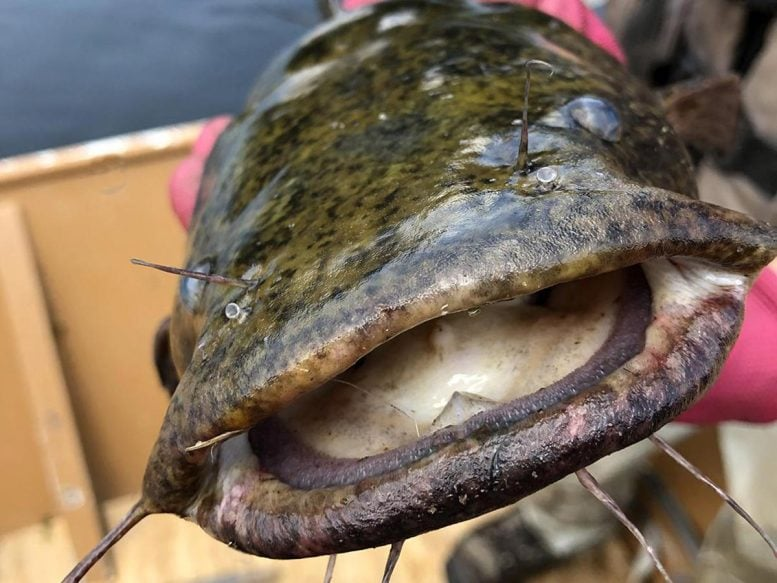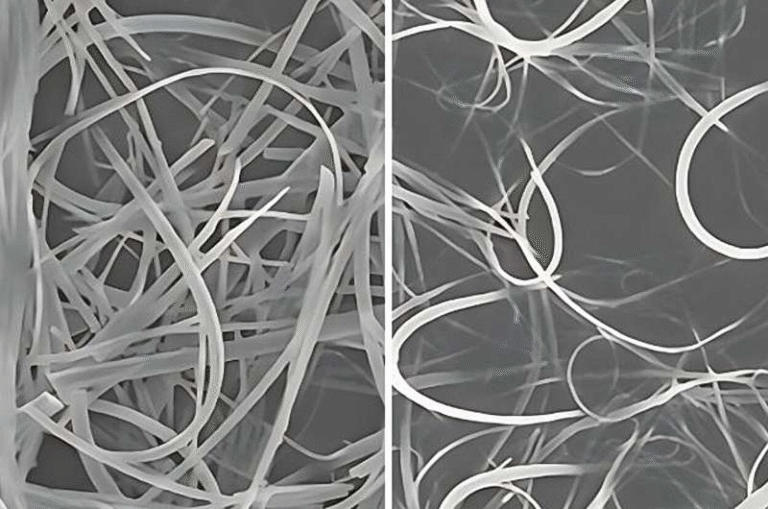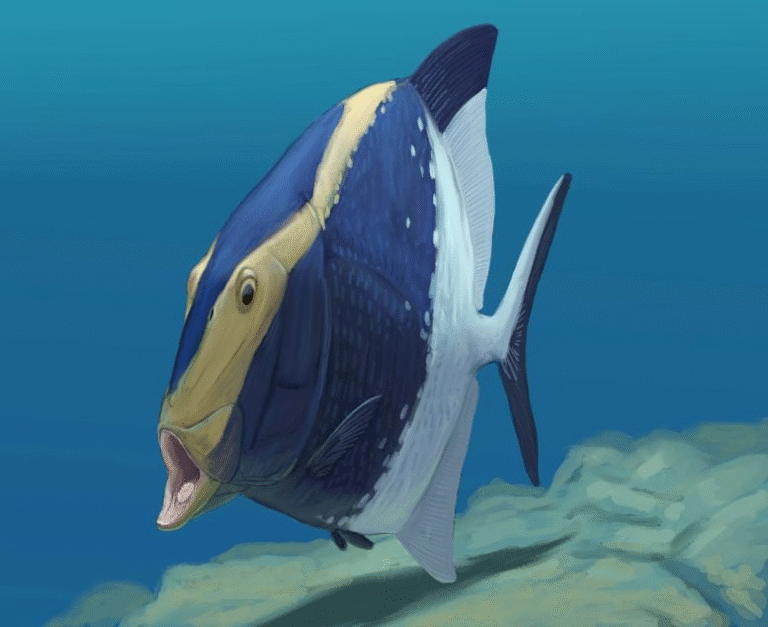Invasive Flathead Catfish Now Apex Predator in Pennsylvania’s Susquehanna River

Flathead catfish, originally from the Mississippi River basin, have quietly but powerfully taken over parts of Pennsylvania’s Susquehanna River. A new study published in September 2025 shows that these fish are no longer just another invasive species—they have climbed to the very top of the food chain, becoming the river’s apex predator. Their rise is reshaping how native fish eat, behave, and survive, creating ripple effects throughout the entire ecosystem.
The Study at a Glance
Researchers from Penn State University, the U.S. Geological Survey (USGS), and the Pennsylvania Fish and Boat Commission worked together to measure how the arrival of flathead catfish is altering the food web in the Susquehanna River. The study was led by Olivia Hodgson, a Penn State graduate student, with contributions from USGS scientist Tyler Wagner, biologist Geoffrey Smith, hydrologist Kelly Smalling, and fisheries researcher Sydney Stark, among others. Funding came from Pennsylvania Sea Grant and the USGS.
The team didn’t just look at what these fish were eating through stomach contents. Instead, they applied stable isotope analysis, a scientific method that tracks the chemical signatures of carbon and nitrogen in fish tissues. This technique allows scientists to understand what fish are eating, where they are feeding, and how their ecological roles shift in different environments. In simple terms, it gives a reliable picture of how energy flows through the ecosystem.
What They Found
The research team collected a total of 279 fish and 64 crayfish from different sections of the Susquehanna River, including invaded and uninvaded stretches. Here’s the breakdown:
- 79 flathead catfish
- 113 channel catfish
- 45 smallmouth bass
- 42 minnows from nine species
- 64 crayfish
All samples were oven-dried, ground into powder, and sent to specialized labs at Penn State and Michigan State University for analysis.
The results were striking. In areas where flathead catfish were present:
- Flathead catfish held the highest trophic position, meaning they ranked above traditional predators like smallmouth bass and channel catfish.
- Channel catfish dropped lower on the food chain, either being displaced or adapting their diets to avoid direct competition with the newcomers.
- All species showed expanded and overlapping diets, indicating shifts in feeding strategies to reduce conflict or avoid being prey.
This strongly supports the trophic disruption hypothesis—the idea that when a powerful new predator enters an ecosystem, native species are forced to change their diets, habitats, and behaviors. Over time, these disruptions can destabilize ecosystems by reshaping food webs and altering how energy flows.
Why Flathead Catfish Dominate
Flathead catfish aren’t just another large fish. They come with a set of characteristics that allow them to thrive when introduced to new waters:
- Rapid growth: They grow quickly in the Susquehanna system.
- Large body size: Some individuals can exceed 40 pounds in this river, with others across the U.S. reaching 60–100 pounds and over 4 feet in length.
- Generalist diet: They eat a wide range of prey, including crayfish, minnows, channel catfish, and even smallmouth bass.
- Few natural predators: Once they reach adulthood, almost nothing in the Susquehanna is capable of preying on them.
These traits allow them to outcompete native predators and fundamentally shift the balance of the food web.
How They Got Here
Flathead catfish are native to the Mississippi, Missouri, Ohio, and Rio Grande basins, but they have been introduced to many other waterways across the U.S. Sometimes they are stocked deliberately for recreational fishing, other times they spread naturally through river systems.
In the Susquehanna River, flatheads were first detected in the early 1990s (some records suggest 1991, others 2002). Since then, their numbers have steadily increased. As populations grew, concerns rose about their impact on native fish communities and recreational fisheries—a concern that this new study has now confirmed with data.
The Broader Impacts
Flathead catfish aren’t just reducing native fish populations. They are also forcing behavioral changes in species that have been in the river for centuries. For example:
- Channel catfish now occupy lower food web positions, feeding differently in invaded sections than in non-invaded ones.
- Smallmouth bass show dietary overlap with flatheads, suggesting increased competition.
- Minnows and crayfish are caught in the middle, facing pressure from both the invasive predator and the shifting behaviors of native predators.
Stable isotope analysis revealed not only shifts in trophic positions but also expanded isotopic niches—meaning species are diversifying their diets more widely than before. This indicates stress and adaptation in response to the invader.
Why Stable Isotope Analysis Matters
The use of stable isotope analysis here is key. Unlike short-term diet studies that look at stomach contents, isotope analysis provides a long-term picture of feeding habits and energy flow. By examining the isotopic signatures of nitrogen and carbon:
- Nitrogen isotopes indicate trophic level (who eats whom).
- Carbon isotopes reveal habitat use and the sources of energy in the food web.
In this study, isotope analysis showed clear patterns of trophic reorganization, niche expansion, and overlap—powerful evidence of how flatheads are changing the ecosystem.
What This Means for Pennsylvania
For Pennsylvania’s Susquehanna River, the arrival of flathead catfish has effectively rewritten the rules of the ecosystem. With flatheads at the top:
- The energy flow in the river is changing.
- Native predators are losing dominance.
- Recreational fisheries for species like smallmouth bass could be at risk.
It also raises questions for management and conservation. Should more resources be put into controlling flathead populations? Is eradication even possible at this stage? Or should efforts focus on helping native species adapt?
Flathead Catfish Beyond the Susquehanna
The situation in the Susquehanna is not unique. Across the eastern U.S., flathead catfish invasions have raised alarms. States like North Carolina, Georgia, and Virginia have also reported declines in native fish populations after flathead introductions. In some areas, flatheads have been linked to drops in sunfish and bullhead catfish populations.

Because flatheads are highly valued as a sport fish due to their size and strength, they present a tricky management challenge. Anglers often support their presence, while ecologists highlight the risks to native ecosystems.
Learning More About Flathead Catfish
To provide some additional context, here are some key facts about the species:
Basic Biology
- Scientific name: Pylodictis olivaris
- Family: Ictaluridae (North American catfishes)
- Lifespan: Up to 20 years in the wild
- Weight record: Over 120 pounds (caught in Kansas)
Habitat
Flathead catfish prefer large rivers, reservoirs, and slow-moving waters with plenty of cover like logs, rocks, and deep pools. They are bottom dwellers and rely on ambush hunting.
Feeding Behavior
Juvenile flatheads eat insects and small invertebrates, but as they grow, they switch almost entirely to fish and crayfish. Unlike channel catfish, which are more opportunistic scavengers, flatheads are primarily live fish predators.
Reproduction
Flatheads spawn in cavities like hollow logs or undercut banks. Males guard the nest and fan the eggs until they hatch.
The Bigger Picture of Invasive Species
The flathead invasion of the Susquehanna River is just one example of a larger global issue: invasive species altering ecosystems. Similar patterns have been seen with:
- Asian carp in the Mississippi River system
- Zebra mussels in the Great Lakes
- Northern snakehead fish in East Coast rivers
In each case, the invader disrupts existing food webs, often leading to reduced biodiversity and long-term ecological instability.
Final Thoughts
The rise of the flathead catfish in Pennsylvania’s Susquehanna River is a powerful reminder of how quickly ecosystems can change when a new predator arrives. These fish now hold the highest position in the food web, reshaping diets, behaviors, and energy flow. For Pennsylvania, it’s both a scientific concern and a management challenge, with consequences for native species and recreational fisheries alike.
As researchers point out, the story isn’t just about one invasive species—it’s about how ecosystems respond under pressure, and how a single invader can reorganize entire food webs.
Reference: Invasive predatory fish occupies highest trophic position leading to expansion of isotopic niches in a riverine food web – Ecology, September 4, 2025





